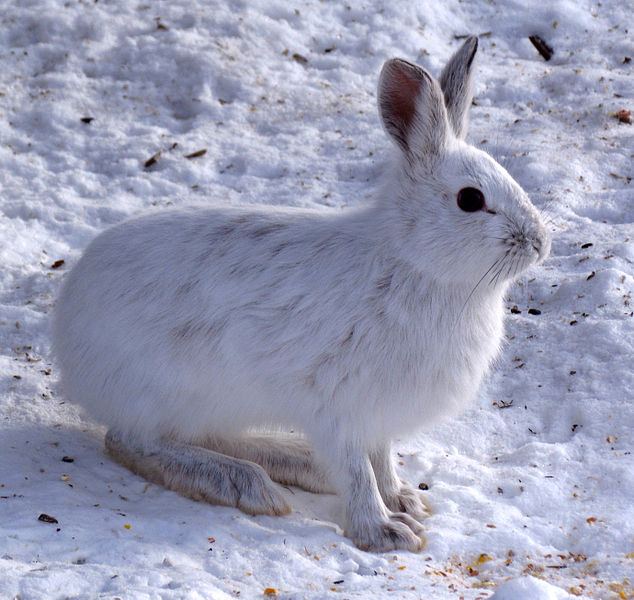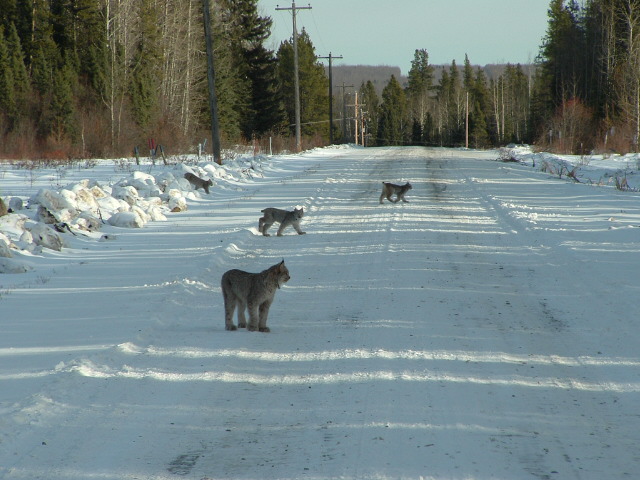Canada Lynx have been receiving a lot of limelight the past couple of months.
A Colorado photo of two lynx on the roadside went viral, prompting calls to close the highway for the sake of the lynx. In Canada, a pair of lynx were photographed near Banff, AB and three were caught on video in British Columbia. A ski resort in Alberta is alternately closing its runs as reports of a female and her kitten are received.
For an animal that relies on its elusiveness, why are so many being reported this year? Meet the reason.

Snowshoe hares have a cyclical population which takes between eight and eleven years to go from peak, through decline, and back to peak. The period of abundance usually lasts for two to five years.
Sunspot activity, predator numbers, food availability, parasite load, stress and disease have all been investigated as causes of the cycle. All of these factors likely play a role, with predation and food availability being the most important. Litter sizes vary with the population cycle, with females producing more young during the low phase than during the peak.

Canada Lynx feed almost exclusively on snowshoe hares, and their populations follow the hare cycle. A year or so after the hares have declined the Canada Lynx population crashes, helping ensure the survival rate of the few remaining hares. More will live to fuel the next population rebound, the lynx numbers will follow, and the cycle continues.
Scientists who have examined the fur-trading records of the Hudson’s Bay Company have been able to trace closely linked 10-year cycles of growth and decline in populations of the two species over the past 200 years.
Canada Lynx are currently at the peak of their cycle, and their numbers will slowly drop over the next few years.
Mating occurs during February or March each year, and the young (usually four) are born in April and May, 60 to 65 days later. Female kits may breed for the first time as they approach one year of age, but this depends on the abundance and availability of snowshoe hares and the physical and nutritional condition of the lynx.
Starvation following the rapid cyclic declines in snowshoe hare populations is the greatest single source of natural mortality among adult and yearling lynxes. About 40 percent of the total lynx population may starve to death following a crash in the snowshoe hare population. During the following three to four years, when the hare population is starting to rebuild, lynxes breed, but the kittens die before winter. This suggests that an adult female simply cannot support both herself and her litter when hares are scarce.
This lynx-snowshoe hare cycle is perhaps the greatest example of how intricately nature is balanced. If you live in Canada Lynx country and would like to increase your chances of seeing one, now would be the time to go looking.